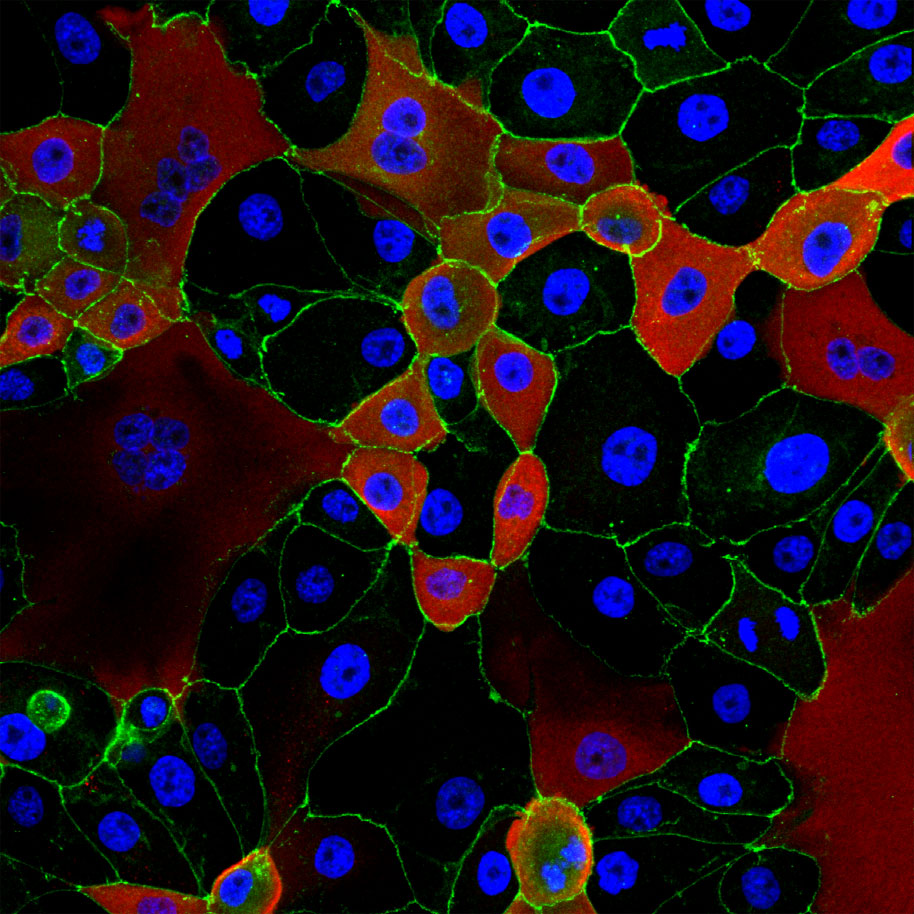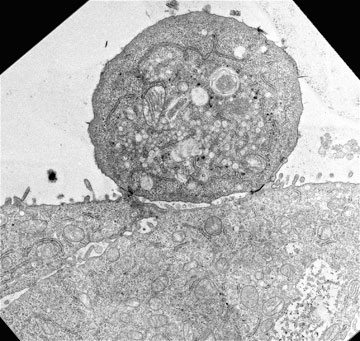Feline Calicivirus
Shelter animals are particularly vulnerable to infectious disease by both immune compromise and by their population density, a combination that creates a unique environment with a high prevalence of pathogens and intense variability in pathogen virulence. In particular we study the pathogenesis of the virulent forms of feline calicivirus (FCV). Although mortality associated with infection is typically low, in rare outbreaks FCV causes high mortality as a consequence of virulent systemic disease (VSD). There are reproducible differences between the natural disease of the VS-FCV biotypes since these isolates can gain access to endothelium as well as epithelium; a mechanism we propose enhances their tissue tropism. We seek to better characterize the capacity of FCV to cause either VSD or mild disease by examining characteristics of epithelial cell invasion, persistence, cell polarity, viral shedding, and cell-cell transfer using cultured epithelial and endothelial cells.



